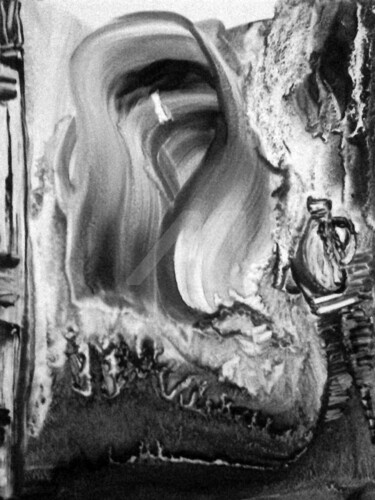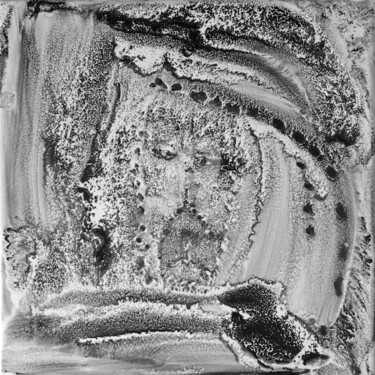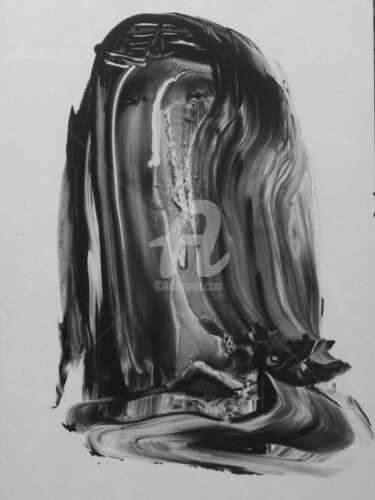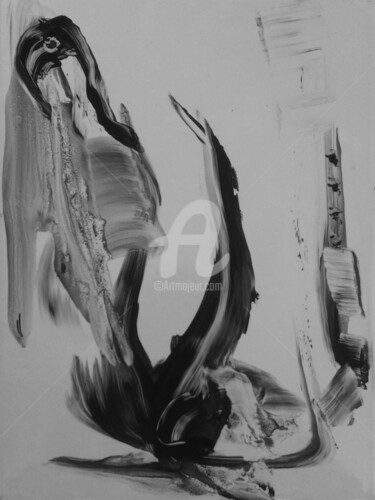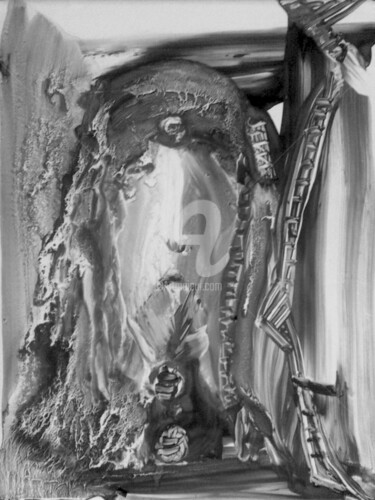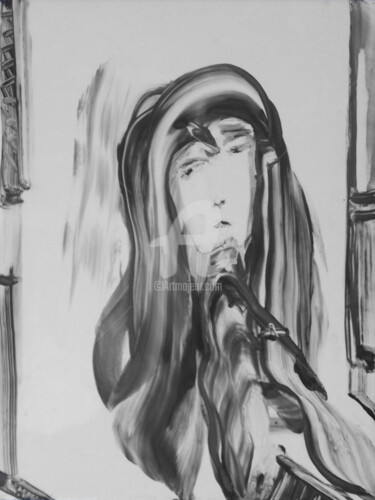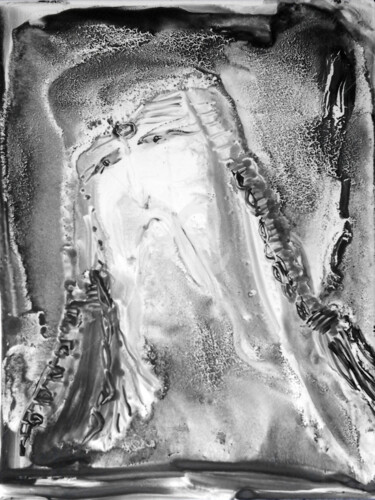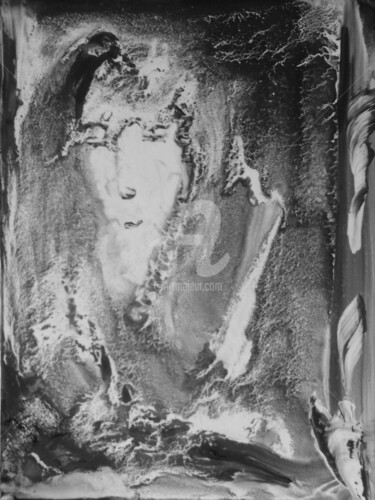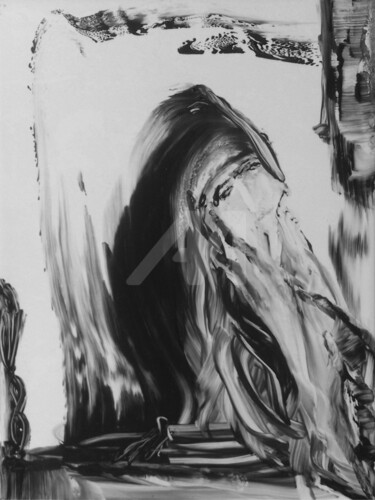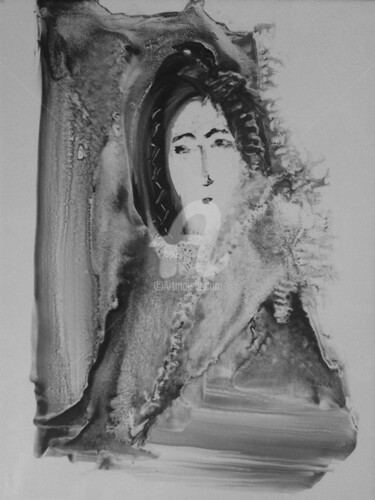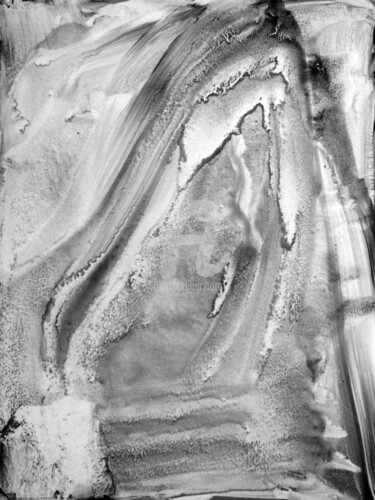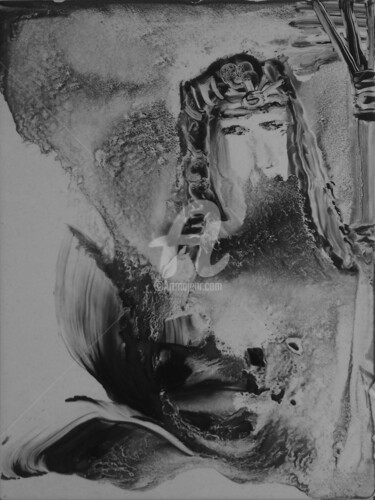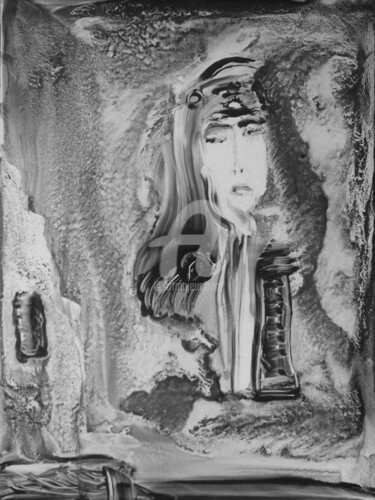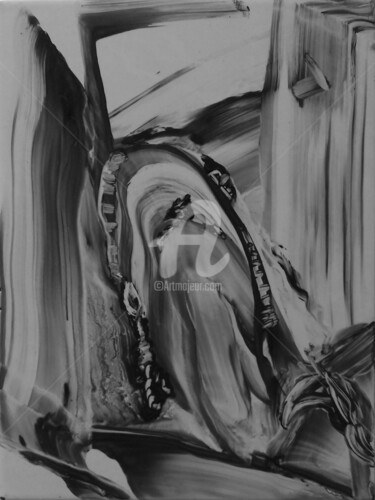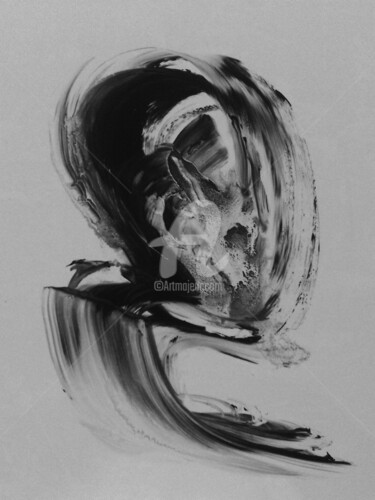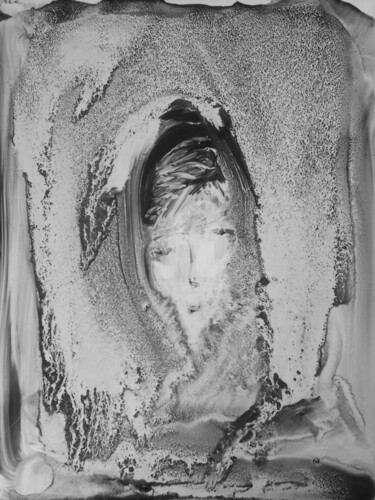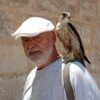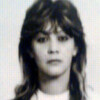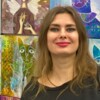Rajka Serbak
At the end of the 19th century, He came from somewhere from Montenegro, brought with himself, his pride, his legend and his ancestors' legacy, which he secretly and secretly managed to preserve, as they preserved all this before him, traveling and seeking better conditions for his family through the genealogy for more than 7500 years ...
He himself raised 13 hearths in the storm of fighting oppressors, and remembered him as a human and great proud fighter for the birth of a nation to whom he belonged ...
When he left, he had his gusles in his hands, and brought with him all the positive energy collected for thousands of years. That same cosmic energy is now returned from the Gods of Nature by those who have come to remember Him with a sincere heart ...
These paintings, and this Galleryes is dedicated exactly to His Majesty, because they were created precisely with the positive cosmic energy that He, and only He could have and carry with Him ...
He was my ancestor.
The women was born in 1957 near Sarajevo... painting has appeared as a cosmic energy which turns into an artistic picture with hand..., and goes on...
Discover contemporary artworks by Rajka Serbak, browse recent artworks and buy online. Categories: contemporary bosnian artists. Artistic domains: Painting. Account type: Artist , member since 2017 (Country of origin Bosnia & Herzegovina). Buy Rajka Serbak's latest works on ArtMajeur: Discover great art by contemporary artist Rajka Serbak. Browse artworks, buy original art or high end prints.

Artist Value, Biography, Artist's studio:
Ancient Lightnings • 180 artworks
View allRajka Serbak
Tempera on Other substrate | 25.2x18.9 in
Rajka Serbak
Tempera on Other substrate | 25.2x18.9 in
Rajka Serbak
Tempera on Other substrate | 25.2x18.9 in
Rajka Serbak
Tempera on Other substrate | 25.2x18.9 in
Rajka Serbak
Tempera on Other substrate | 25.2x18.9 in
Rajka Serbak
Tempera on Other substrate
Rajka Serbak
Tempera on Other substrate | 25.2x18.9 in
Rajka Serbak
Tempera on Other substrate | 25.2x18.9 in
Rajka Serbak
Tempera on Other substrate | 25.2x18.9 in
Rajka Serbak
Tempera on Other substrate | 25.2x18.9 in
Particles of the Heralds • 96 artworks
View allRajka Serbak
Tempera on Other substrate | 25.2x18.9 in
Rajka Serbak
Tempera on Other substrate | 25.2x18.9 in
Rajka Serbak
Tempera on Other substrate | 25.2x18.9 in
Rajka Serbak
Tempera on Other substrate | 25.2x18.9 in
Rajka Serbak
Tempera on Other substrate | 25.2x18.9 in
Rajka Serbak
Tempera on Other substrate | 25.2x18.9 in
Rajka Serbak
Tempera on Other substrate | 25.2x18.9 in
Rajka Serbak
Tempera on Other substrate | 25.2x18.9 in
Rajka Serbak
Tempera on Other substrate | 25.2x18.9 in
Rajka Serbak
Tempera on Other substrate | 25.2x18.9 in
Rajka Serbak
Tempera on Other substrate | 25.2x18.9 in
Rajka Serbak
Tempera on Other substrate | 25.2x18.9 in
The Skill of Life and Survival • 47 artworks
View allGames of Ancient Butterflies • 91 artworks
View allEnergy Cristals • 41 artworks
View allRecovery, using the old Rates • 57 artworks
View allFor those who are coming • 53 artworks
View allSagittarius of the Old Time • 49 artworks
View allReversal in the New Age • 23 artworks
View allLife in the Old Time • 53 artworks
View allRecognition
The artist's works have been noticed by the editorial staff
Biography
At the end of the 19th century, He came from somewhere from Montenegro, brought with himself, his pride, his legend and his ancestors' legacy, which he secretly and secretly managed to preserve, as they preserved all this before him, traveling and seeking better conditions for his family through the genealogy for more than 7500 years ...
He himself raised 13 hearths in the storm of fighting oppressors, and remembered him as a human and great proud fighter for the birth of a nation to whom he belonged ...
When he left, he had his gusles in his hands, and brought with him all the positive energy collected for thousands of years. That same cosmic energy is now returned from the Gods of Nature by those who have come to remember Him with a sincere heart ...
These paintings, and this Galleryes is dedicated exactly to His Majesty, because they were created precisely with the positive cosmic energy that He, and only He could have and carry with Him ...
He was my ancestor.
The women was born in 1957 near Sarajevo... painting has appeared as a cosmic energy which turns into an artistic picture with hand..., and goes on...
-
Nationality:
BOSNIA & HERZEGOVINA

- Date of birth : 1957
- Artistic domains:
- Groups: Contemporary Bosnian Artists
Ongoing and Upcoming art events
Influences
Education
Artist value certified
Achievements
Activity on ArtMajeur
Latest News
All the latest news from contemporary artist Rajka Serbak
Fostering, and refreshing the culture of the old civilization
The impoverished image of the old Slovene gods can easily be enriched with the lost details, if we use the customs and terms from our language.
The forgotten beliefs of the old Slavs can be found in today's customs of our people, even in the contents of contemporary religions.
With the help of the description of gods in old chronicles and sculptures found in the rivers of Poland, Ukraine and Russia, today it is possible to reconstruct the religious system of our ancestors who, unfortunately, left very little written traces behind.
What is particularly interesting is the fact that the impoverished image of the old Slovene gods can easily be enriched with the lost details, if we use the terms from our tongue. It is a rich archaeological treasury.
He preserved, as well as the names of the gods themselves, many characteristics of each individual deity. For example; The goddess Vesna is the spring newsletter, the goddess Morama (Mora) announces the occasional Sea of body and spirit, the God of Radgost provides attention and hospitality to the intended person, etc.
From Perun and Svetovid, to Vesna and Svaroga - this is the hierarchy and role of deities in the Pantheon of ancient Slavs
Perun Gromovnik - Lord of lightning in the sky and the fire on the earth
Perun is the most powerful Slovenian god. He was the master of the cloud, and similarly, in later Greek civilization, the chief god Zeus would be labeled as a collector of clouds. He sang like an unbeatable warrior, because he was the creator of lightning and thunder. It belonged also to the stars, the Sun and the Moon. He was also the master of fire on the earth, so the forces, which in ancient times aroused fear, were his.
For Perun are also related spiritual occurrences, created under the influence of the cult of fire: ale and firefly. From animals, Peruna was symbolized by a wild goat and extinct beef duck, and from plants: oak, perch, sage, wheat, nettle, apples and guards. Perun's features include: boulders, quartz stone, flags and horns.

In front of his statue, the believers maintained lithium (krstonos) and performed vows, with plant and animal sacrifices. When they did not have temples (reminded by Christian churches), the Slavs prayed to Perun in sacred gardens, in the basins, or below the oak. From this, the worship of wood was kept in Christianity - a record, usually an oak tree.
The functions of the god Perun in Christianity are covered by: St. Elijah and Panteleius and Ognjen Mary, and partly by St. Peter Bogišar, Nikola, Spas, Archangel, and Jelisius. The time of the celebration of Perun fell around today's Ilinden, on Thursday and next Monday.
Peruvian wooden statues contained signs of the Sun, lightning, stone quartz, oak fruits and other plants. He held a horn in his hand, and the cap and parts of the garment were pointing at the armored warrior.

Svetovid Four-headed - Warrior on a white horse
Svetovid is a god with four heads, but this feature did not imply the deity-monster. It is only a small pantheon of important Slovenian gods: Peruna, Svaroga, Lade and Mokoše (near the Serb Vide). As such, they looked at all over the world and deserved the name of Svetovid (Svevidja).
The holiness of this god implied the universality of the Universe, and on the Svetovid sculptures, the upper (spiritual) world, the earthly (human) and the lower (Gadian), was represented. The Slavs created the idea of the nightmare Domovoje, so the horse on the statue of Svetovid represented the upper world, the middle one depicted the figure of a woman, and the lower Dabo - the identical representation of the devil in Christianity.

Svetovid is a warrior. It is presented with a sword and a horn. He was tied to a shingles and a white horse. A warrior on a white horse represents a symbol of victory and our time.
From the plants, Svetovida symbolized: peony, patchwork, ivanjke flowers, maple and jasen. In addition to swords and horns, he has flags, goblets and amulets of gold, silver, stones, horns, bones and wood.
Cultures are temples and needs. The rituals were performed by the youth circles, led by the Rushs - in Christianity, the queens. In honor of Svetovid there were fires and they passed under flower-colored wreaths and they celebrated spring, summer and autumn.
The music was continuous, so the women fell into the trans parachutes we meet today in Eastern and Southern Serbia. The Days of Svetovid are from St. Vida to Ivanjdan. His functions in Christianity are covered by: St. Vid and St. Lazarus.
Svarog Sunčani - Creator of everything in heaven and earth
The God of Svarog is not as powerful as Perun, Svetovid, and Triglav, who use natural forces and use the weapons of warriors, but overwhelms them with divine qualities. Svarog is a sun god. He is the Creator of everything in Heaven and Earth, and is the maker of it. It is called the Visions. It is distinguished from other gods, which suggests a kind of monotheism in the old Slovene religion.
According to one legend, Svarogova's wife, Vida, asked Vishnikov to create a man in her own way. The devil listened and breathed his breath to one oak, from which he became the first man - Dubravko. Another oak gave her breath to Vida and from it became the first woman - the beloved.
The sculptures of the Temples in the temples were in a sitting position, like the king on the throne. He had an eagle on his chest, and on his head a hat with feathered horns. He held two stingles with the figure of the Sun on each. In front of him there were small statues of other gods, which said that Svarozici were his children.
Along with the temples, a cult place also had a fireplace. In honor of the Svarog, the Slovenians ritually placed an oak barrel on the hearth, which represented the spirit of the ancestors, and the souls burned the fire of the Sun. In honor of the Svarog, the cakes made big cakes, behind which they were "hiding" and the believers wanted such cakes to be next year.
Various fetishes against spells and blades of animals were tied to the Svarog. It was represented by eagle, hazel, walnut, grain and vines. In his honor were held masks and calendars. The Time of the Squirrel fell from the Christmas Eve to Poklada. As the most powerful god, they belonged to him: the Sun, the Moon, the long, the stars, and the spiritual manifestations of the villa. In Christianity, God has His functions.

Veles Wheat - Protector of livestock farmers
In the collective memory of Slavs, the god of Veles stayed longer than other gods. Especially with the Balkan and Carpathian Slavs. According to his name, the medieval principality of Vlaska was also named. In the Balkans, all herdsmen were called hairs in the Middle Ages, and at the same time this social name was used as a mark of nationality, and many of the Serbs were labeled as Vlachs and were often identified or considered as relatives of the inhabitants of Vlaska in today's Romania. The Austrians called the Vlachs and the Serbs in Vojna Krajina, and the Serb region in Western Slavonia, Mało Vlakko.
Veles is an earthly deity, a protector of cattle and rats. It is celebrated at the time of sowing, harvesting and grazing. He was attributed to the eclipse of the Sun. The Veles also belonged to the spiritual forces: dragons, ale and night forest horsemen Lesovik. Veles' cult places, besides temples, were: fields, pastures, scaffolds, needs and cemeteries. The ritual consisted of masquerade, wolf (imitation of wolves) and vowing. His symbol was a stick, symbolized by: grass, wolf, black cock and domestic animals. The wooden statue of Veles was carved with the characters: a lion of white wolf, a man, a wolf and a winged lion with an eagle head. The lion (dragon) had a flower of lily on the top of the tail. Welsh clothes are gorgeous - as well as fitting for the protector of livestock. The beard of Veles is represented by the wheat class, so, probably, the saying goes to the Serbs: "Full bearded beard" - when he is born and successful in trade.
The functions of the god of Veles in Christianity are covered by the saints: Vasily, Luka, Blaz, Cornelia and Ivan, and partly: Sava and Mrata.
Wooden sculpture of Veles was carved with characters: chrome white wolf, beetle, wolf and winged lion with eagle head. The lion (dragon) had a flower of lily on the top of the tail. Welsh clothes are gorgeous - as well as fitting for the protector of livestock. The beard of Veles is represented by the wheat class, so, probably, the saying goes to the Serbs: "Full bearded beard" - when he is born and successful in trade.
The functions of the god of Veles in Christianity are covered by the saints: Vasily, Luka, Blaz, Cornelia and Ivan, and partly: Sava and Mrata.


Mokis - Goddess mother
Although the name of this deity is reminiscent of the masculine, it is a goddess, with the Serbs also called Vido. (In Serbian language, female is a similar noun - hen)
Mokos is also known as the Mother of God. She is the protector of family, marriage and all housework. According to one Slovene legend, Vida is the wife of the saint and creator of the Svarog (the Higher God).
Mokos remedied the effects of malevolent eyes and was related to the spiritual occurrences of night riders Domovoja (home) and Lesovik (forest). Sheep and bees, linden trees, cantarion, blackberry and flax were symbolized.
Triglav Ratnik - Black horse at night
Triglav is a god with distinctive features of warriors. He has three heads and is the protector of Heaven, Earth, and Hades. He must have been extremely honored when the first Christians replaced him with the more slanderous names: Troglav Jabučilo, Trojan and Trajan. The Days of Triglav fell between winter and spring, and cult places, in addition to temples, were on his shelves and in the mountains.
The night was considered the time of the operation of the god Triglav. It is possible that, for that reason, on his statues, his eyes were covered with a tie on all heads. In his power, there were fairies and night horsemen. It was symbolized by: black and lame horses, swans and geese, and from plants: zoves, mountain flowers and grapes. Because of grapes, Triglav was in the possession of a boar, whose contents it fitted with a mighty warrior, along with its obligatory equipment: sword, spear, saddle and horn. The ceremonies in honor of Triglav are: koleda - by skipping the fire for the purpose of cleansing and playing with a song and song to cause rain, swords and mazes - when the defendants had to burn hot iron from the water. It was thought that the innocent would succeed in doing so, and that the culprits would be hurt.

Radgost - Bread, they are also a bird on the shoulder
God Radgost deserves that our neighbors have long recognized that the soul of Slovene is wide. Although Radgost, in comparison with other gods, had slave duties, his cult was widely respected. Perhaps he was represented with two heads because he was a patron of hospitality - he was trembling over the host with one head and the other over the guest.
His statue in the temples was so carved that he did not allow the confusion about the host's behavior towards the guest. The figure of a bird on Radgost's shoulder was a joyful announcement of the guest. Everything awaited a guest in the hostel was presented on the statue of Radgosta: bread and salt pans, which is still awaited by guests in the homes of the Serbs. Further, the figures of domestic animals, then boars, bears, swans and grapes say that the guest should not be denied anything from the host's table and pantry. The most important tool of every household is an ax and it is in the right hand of Radgosta.
From natural phenomena, Radgost is related only to the wind, and from the spiritual for the witches and the house spirit - the horseman of Domovoja. His most numerous amulets were dedicated to him - from precious metals, stone and wood. It was symbolized by a green horse, a boar, a bear and a walnut. God Radgost celebrated at the time of the summer equinox, and the cult places beside the temple had a fireplace and a home threshold. Today, the Serb threshold is respected in the Serbs, so it is transmitted through him and the bride, and every intruder who oversteps it, is guaranteed respect and security in the host's house.
Radgost functions in Christianity were transferred to St. Andrew and partly on the Holy Trinity.
Reviews and comments

